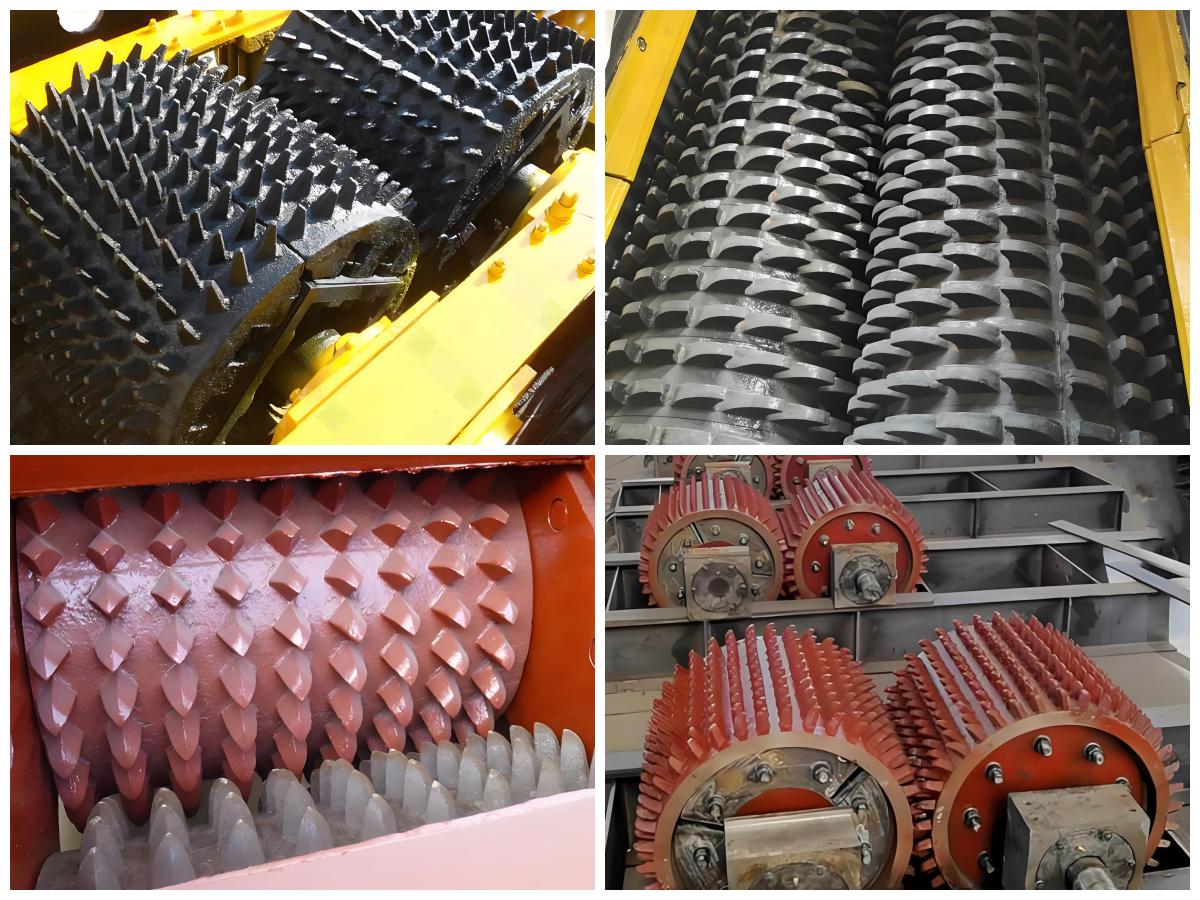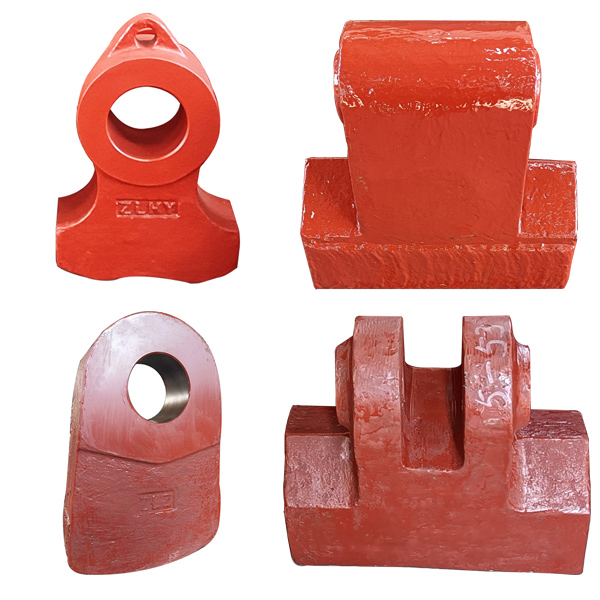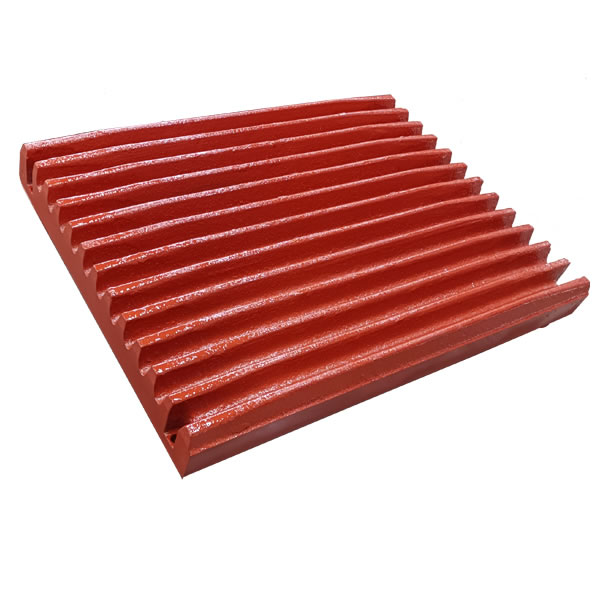Analysis and Maintenance Key Points for Roller Crusher Wear Parts
- 2025-08-25
- view countïž
Double-roll crushers, with their simple structure, low overburden rate, and uniform product particle size, are widely used in industries such as mining, metallurgy, chemicals, and building materials. Their core operating principle is to crush materials using two counter-rotating rollers, squeezing, grinding, and splitting them. However, this direct contact with the material causes some components to wear significantly under harsh operating conditions. These components are known as wear parts, and their maintenance and replacement costs are directly related to production continuity and operating costs.
Core Wear Parts
1. Roller Skin
This is the most critical and frequently replaced wear part in a double-roll crusher.
Function: It directly contacts the material, withstanding immense squeezing, impact, and grinding forces, making it a critical component in the crushing process.
Wear Forms: The surface gradually wears away, losing its tooth shape, or developing pits and cracks, resulting in reduced crushing efficiency and uneven product particle size.
Material: Typically constructed of wear-resistant materials such as high-manganese steel, high-chromium cast iron, and alloy steel. The choice of material directly impacts its service life.
Types:
Toothed roller skins: Suitable for crushing materials with medium to low hardness (such as coal, coke, limestone, etc.). These roller skins have teeth for enhanced splitting and crushing action.

Smooth roller skins: Primarily used for materials with higher hardness or where a high degree of grinding fineness is required (such as in the mineral processing and ceramics industries), they rely on crushing and grinding.
2. Bearings
Bearings are the core components that support the roller's rotation. Although they do not directly contact the material, they operate in extremely harsh environments.
Function: They support the rollers and ensure smooth, high-speed rotation.
Damage Types:
Wear: Dust can easily intrude into the bearing cavity, causing lubrication failure and accelerating bearing wear.
Overheating: Insufficient lubrication or dust intrusion can cause bearing overheating, even seizure and burnout.
Damage: Bearings are subject to significant radial pressure, and long-term operation can lead to fatigue pitting and cage fracture.
Importance: Bearing damage can cause roller seizure and downtime, making repair and replacement very difficult. Therefore, their reliability is crucial.
3. Speed Reducer and Gears
The power transmission system of the roller crusher.
Function: The speed reducer reduces the motor's speed, increases the torque, and transmits it to the active roller. Gears (usually long-toothed gears) ensure the two rollers rotate synchronously in opposite directions.
Damage Types:
Gear wear: Tooth profile wear, especially after long-term operation, can affect the stability of the gap between the two rollers, thereby affecting the output particle size.
Tooth breakage: Foreign objects or severe impact can cause tooth breakage.
Speed Reducer Failures: Gear pitting, bearing damage, oil seal leakage, etc.
4. Foundation Fixing Bolts
Function: Secure the main components of the crusher.
Damage Types: These are prone to loosening or even breaking under prolonged and intense vibration and require regular inspection and tightening.
5. Sealing Device
Function: Mainly used to seal the bearings to prevent dust intrusion.
Damage Types: Rubber seals can easily age and wear, losing their sealing effectiveness and significantly shortening the bearing life.
6. Feeding Device and Liner
Function: Guide the material into the crushing chamber. Damage: The material can also erode and abrade the feed trough and the inner wall lining of the frame.
Measures to Extend the Life of Wear Parts
Rational Selection: Select the appropriate roller skin type (toothed/smooth surface) and material based on the material's hardness, particle size, moisture content, and other characteristics.
Uniform Feeding: Avoid one-sided feeding or excessive feeding. Ensure that the material is evenly distributed along the entire length of the roller to prevent the formation of circular wear grooves on the roller surface.
Control Foreign Objects: Iron objects, drill bits, and other non-breakable objects are strictly prohibited from entering the machine. Installing an iron remover and metal detector at the front end is strongly recommended.
Regular Inspection and Adjustment:
Regularly inspect the roller surface for wear. If severe wear causes production and particle size to fall below standard, promptly repair the roller skin with welding or replace it.
Regularly inspect and adjust the roller gap to ensure the output particle size.
Regularly check bearing temperature, lubrication status, and bolt tightening.
Ensure Good Lubrication: Use the specified brand of lubricant/grease and regularly replace and replenish it, especially the bearing lubrication, as this is key to extending its life. Timely Overlay Welding Repair: Worn rollers don't necessarily need to be replaced immediately. Wear-resistant welding rods can be used to repair them, which is much cheaper than replacing new rollers.
Summary
Maintaining the wearing parts of a roller crusher is crucial to ensuring long-term stable operation and controlling production costs. The rollers and bearings are of paramount importance for maintenance. Establishing a preventative, regular maintenance program and closely monitoring the condition of these components can effectively reduce unplanned downtime and improve production efficiency and economic benefits.


